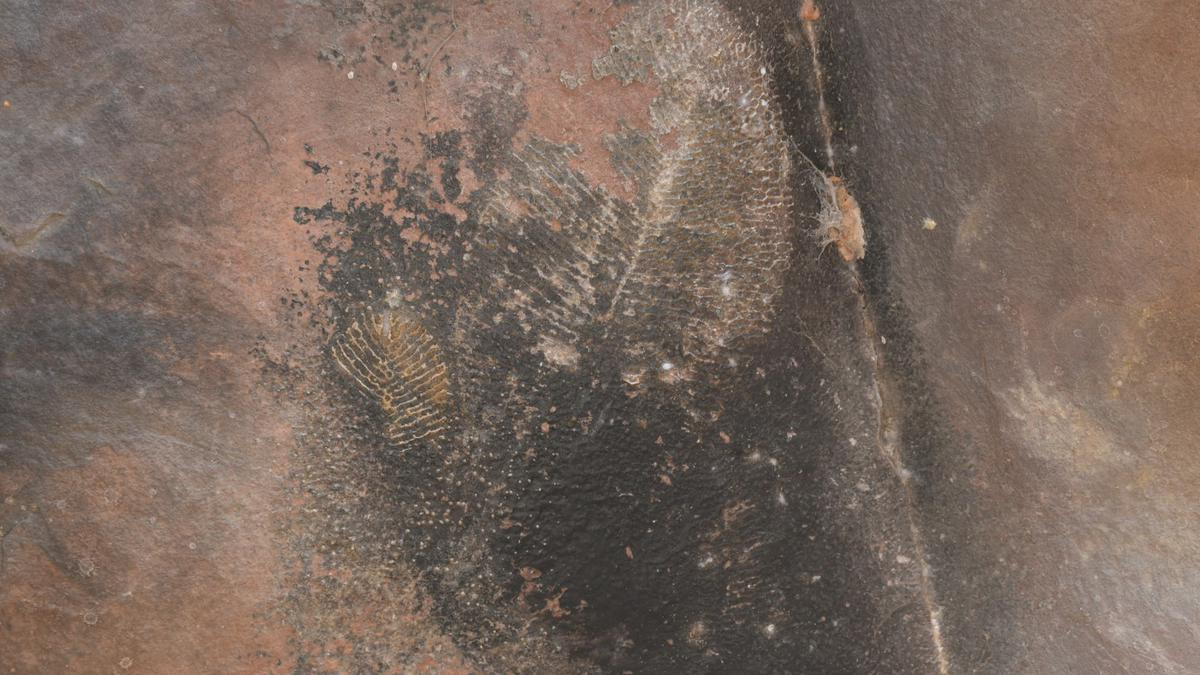News Highlight
Dickinsonia fossil found in Bhimbetka turns out to be a decayed beehive.
Key Takeaway
- Scientists discovered fossils of an extinct mammal in India’s Bhimbetka Rock Shelters in 2021, which they claimed as a stunning discovery.
Dickinsonia fossil
- About
- Dickinsonia is an extinct genus of primitive animals living in Australia, Russia, and Ukraine during the late Ediacaran epoch.
- Dickinsonia is often shaped like a bilaterally symmetrical ribbed oval.
- Its affiliations are presently unknown; its way of growth is consistent with a stem-group bilaterian affinity.
- However, some have proposed that it belongs to the fungi or even an “extinct kingdom“.
- Furthermore, the discovery of cholesterol molecules in Dickinsonia fossils gives credence to the concept that Dickinsonia was an animal.
- Significance
- It adds to the evidence of similar paleoenvironments and verifies Gondwanaland’s 550 Ma (mega annum) assembly.
- A paleoenvironment is essentially a historical environment preserved in the geological record.
- Mega-annum, abbreviated as Ma, is a temporal unit equal to one million years.
- In addition, it is often used to represent very long periods in the past in scientific disciplines such as geology, palaeontology, and celestial mechanics.
- This discovery could help scientists better grasp how geology and biology interact to drive the emergence of sophisticated life on Earth.
Bhimbetka Caves
- About
- The Bhimbetka rock shelters were found by V S Wakankar in 1957.
- It is located in Madhya Pradesh’s Raisen District, between Hoshangabad and Bhopal.
- Additionally, it is located in the foothills of the Vindhya Mountains, about 40 kilometres southeast of Bhopal.
- The Bhimbetka rock shelters are a central Indian archaeological site that spans the prehistoric Paleolithic and Mesolithic periods and the mediaeval period.
- It displays the earliest traces of human life in India and Stone Age material dating back to the Acheulian era.
- Furthermore, it is a UNESCO World Heritage Site with seven hills and over 750 rock shelters across ten kilometres.
- Paintings
- Parts of the Bhimbetka rock shelters have prehistoric cave paintings, the oldest of which are approximately 10,000 years old (c. 8,000 BCE), relating to the Indian Mesolithic.
- In addition, most of these are done on the cave walls in red and white.
- This type of rock art represented scenarios such as singing, dancing, hunting, and other ordinary activities of the people who lived there, and it covered a wide range of themes.
- Furthermore, the earliest cave paintings in Bhimbetka are said to date back over 12,000 years.
Other Caves with Rock Art in India
- Bagh caves
- Situated on the banks of the Baghani River in Madhya Pradesh’s Dhar district.
- Armamalai caves
- Armamalai cave paintings in Tamil Nadu’s Vellore region are famous for a Jain temple with ancient paintings, petroglyphs, and rock art.
- Jogimara caves
- Artwork from the Pre-Buddha caves predates the Ajanta and Bagh Caves.
- Amarnath is located in Surguja, Chhattisgarh, at the source of the Narmada.
Pic Courtesy: The Hindu
Content Source: The Hindu



